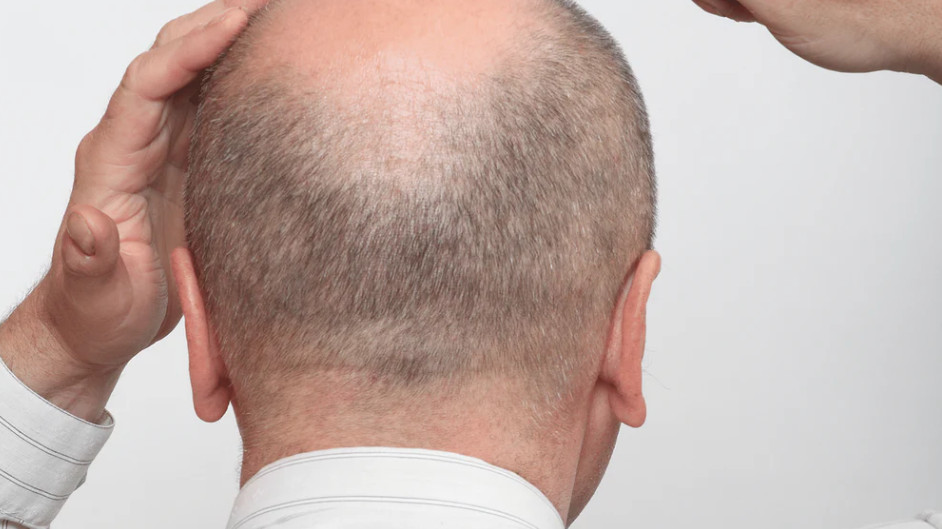Best To Talk – Hair Loss Identifying Symptoms is a common concern affecting millions of people worldwide. It is a natural process to lose a certain amount of hair daily, but when the rate of hair loss exceeds the rate of hair growth, it becomes a cause for concern. Understanding the symptoms of hair fall and the available treatment solutions is crucial for managing this condition effectively. This article will delve into the various aspects of hair fall, including its symptoms, causes, and treatment options.
Understanding Hair Fall Symptoms
Hair fall, also known as alopecia, can occur due to a variety of reasons. It is important to understand that hair goes through a natural cycle of growth, resting, and shedding. On average, a person loses about 50 to 100 strands of hair each day. This is considered normal and is part of the hair growth cycle. However, when you notice excessive hair shedding, it may be a sign of a deeper issue.
Types of Hair Fall
- Androgenic Alopecia: This is the most common type of hair fall, often referred to as male or female pattern baldness. It is genetically determined and can start as early as the teenage years.
- Telogen Effluvium: This occurs when there is a sudden change in the number of hair follicles that are in the resting phase. This can be triggered by stress, illness, or significant life events.
- Alopecia Areata: An autoimmune condition where the body’s immune system attacks the hair follicles, leading to patchy hair loss.
- Traction Alopecia: Caused by continuous pulling of the hair, often due to tight hairstyles, this type of hair fall can become permanent if the hair follicles are damaged.
- Cicatricial (Scarring) Alopecia: A group of rare disorders that destroy hair follicles, causing permanent hair loss. This type is often associated with other symptoms such as itching, pain, and a burning sensation.
Symptoms of Hair Fall Treatment
The symptoms of hair fall vary depending on the type and cause of the condition. Below are some common signs that indicate you may be experiencing abnormal hair loss:
- Thinning on Top of the Head: This is the most common symptom of hair loss, especially in men. It usually starts with a receding hairline and progresses to thinning across the top of the head.
- Circular or Patchy Bald Spots: Some people experience smooth, circular bald spots on the scalp, beard, or eyebrows. This is typically a sign of alopecia areata.
- Sudden Loosening of Hair: A physical or emotional shock can cause hair to loosen and fall out when combing or washing. This is often a sign of telogen effluvium.
- Full-body Hair Loss: Some medical conditions and treatments, such as chemotherapy, can lead to hair loss all over the body.
- Patches of Scaling: This is a sign of a fungal infection, such as ringworm, and is often accompanied by broken hair, redness, swelling, and oozing.
Causes of Hair Fall
Hair fall can be caused by a wide range of factors, which are often interconnected. Some of the most common causes include:
- Genetics: The most common cause of hair loss is genetic predisposition. Androgenic alopecia is hereditary and is more common in men.
- Hormonal Changes and Medical Conditions: Various hormonal changes can trigger hair fall, including pregnancy, childbirth, menopause, and thyroid problems. Medical conditions such as polycystic ovary syndrome (PCOS) and autoimmune diseases can also lead to hair loss.
- Medications and Supplements: Hair loss can be a side effect of certain medications, including those used for cancer, arthritis, depression, heart problems, gout, and high blood pressure.
- Radiation Therapy: The hair may not grow back the same as it was before after radiation treatment.
- Stress: Both physical and emotional stress can cause Hair Fall. High levels of stress may push a large number of hair follicles into the resting phase, resulting in shedding.
- Dietary Deficiencies: A lack of essential nutrients such as iron, protein, and vitamins can lead to hair fall. Poor nutrition weakens the hair shaft and slows down growth.
- Hairstyling Practices: Excessive styling, the use of harsh chemicals, and heat treatments can damage hair, leading to breakage and eventual hair loss.
- Environmental Factors: Exposure to pollution, chemicals, and harsh weather conditions can weaken hair and contribute to hair fall.
Hair Fall Treatment Solutions
While hair fall can be distressing, there are various treatment options available that can help manage and reduce hair loss. The effectiveness of these treatments often depends on the underlying cause of hair fall.
1. Medications
- Minoxidil (Rogaine): This is a topical treatment that is available over the counter. It can be applied directly to the scalp to stimulate hair growth and slow down hair loss. It is commonly used for androgenic alopecia.
- Finasteride (Propecia): An oral prescription medication that is mainly used for male pattern baldness. It works by inhibiting the hormone responsible for hair loss. It is not recommended for women, especially those who are pregnant or planning to become pregnant.
- Corticosteroids: For conditions like alopecia areata, corticosteroids can be injected into the scalp or taken orally to reduce inflammation and suppress the immune system.
- Platelet-Rich Plasma (PRP) Therapy: This involves drawing a small amount of blood, processing it to concentrate the platelets, and then injecting it into the scalp. PRP is believed to promote hair growth and improve hair density.
2. Surgical Procedures
- Hair Transplant Surgery: Hair transplant involves moving hair follicles from one part of the scalp (donor site) to a bald or thinning area (recipient site). This is a permanent solution for hair loss but can be expensive and requires multiple sessions.
- Scalp Reduction: This surgical procedure involves removing bald patches of the scalp and stitching the remaining areas together. It is usually done in conjunction with hair transplantation.
- Flap Surgery: A portion of the scalp with good hair growth is moved to a balding area, reducing the appearance of bald spots.
3. Lifestyle and Home Remedies
- Healthy Diet: Eating a balanced diet rich in vitamins and minerals can help strengthen hair and promote growth. Foods high in iron, zinc, and biotin are particularly beneficial for hair health.
- Stress Management: Reducing stress through techniques such as yoga, meditation, and regular exercise can prevent hair fall caused by stress.
- Gentle Hair Care: Avoiding harsh chemicals, minimizing the use of heat styling tools, and being gentle when washing and brushing your hair can reduce hair breakage.
- Essential Oils: Some essential oils, like rosemary and peppermint, are believed to promote hair growth when massaged into the scalp.
4. Alternative Treatments
- Herbal Remedies: Some people find success with herbal supplements and treatments such as saw palmetto, ginseng, and green tea extracts, which are believed to promote hair growth.
- Laser Therapy: Low-level laser therapy is a non-invasive treatment that uses light energy to stimulate hair follicles and promote hair growth. It is often used in conjunction with other treatments.
- Acupuncture: Traditional Chinese medicine practitioners may use acupuncture to stimulate hair growth by improving blood flow to the scalp.
Prevention of Hair Fall
While it may not be possible to prevent all types of hair fall, certain steps can be taken to reduce the risk:
- Maintain a Healthy Diet: A diet rich in nutrients supports overall health and can help prevent hair loss.
- Avoid Tight Hairstyles: Hairstyles that pull on the hair, such as tight ponytails or braids, can lead to traction alopecia.
- Limit Heat and Chemical Treatments: Overuse of heat styling tools and chemical treatments can damage hair and lead to breakage.
- Regular Scalp Care: Keeping the scalp clean and free from infections or build-up can promote healthy hair growth.
- Manage Stress: Chronic stress can contribute to hair loss, so it’s important to find ways to manage stress effectively.
- Consult a Healthcare Professional: If you notice excessive hair loss, it’s important to consult a healthcare provider to determine the underlying cause and receive appropriate treatment.
Conclusion
Hair fall is a complex issue with multiple causes and symptoms. Early detection and intervention are key to managing hair loss effectively. While some types of Hair Loss Identifying Symptoms are temporary and can be reversed, others may require long-term treatment or even surgical intervention. Understanding the symptoms, causes, and treatment options can empower individuals to take control of their hair health and seek appropriate solutions. With the right approach, it is possible to reduce hair fall and, in some cases, restore hair growth.










